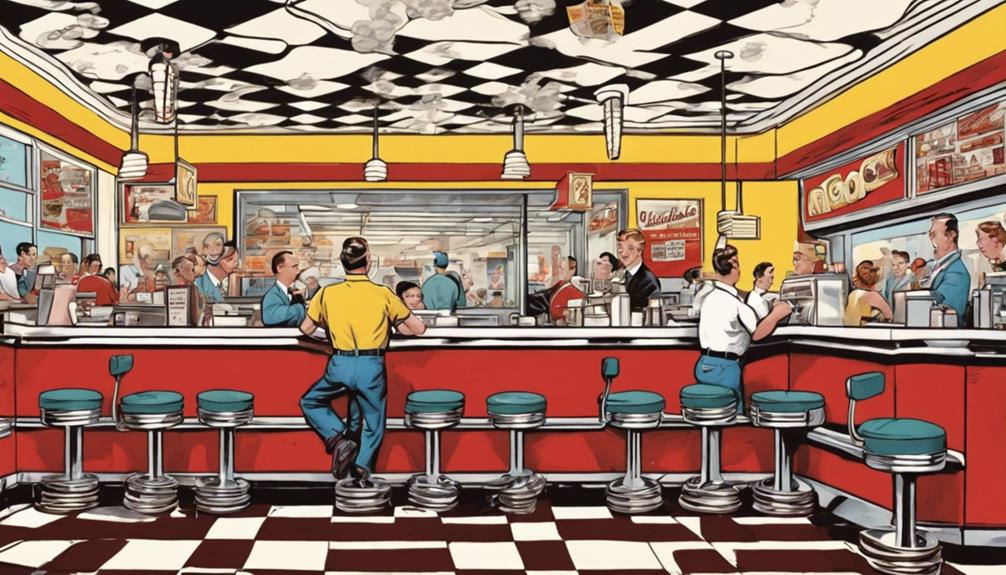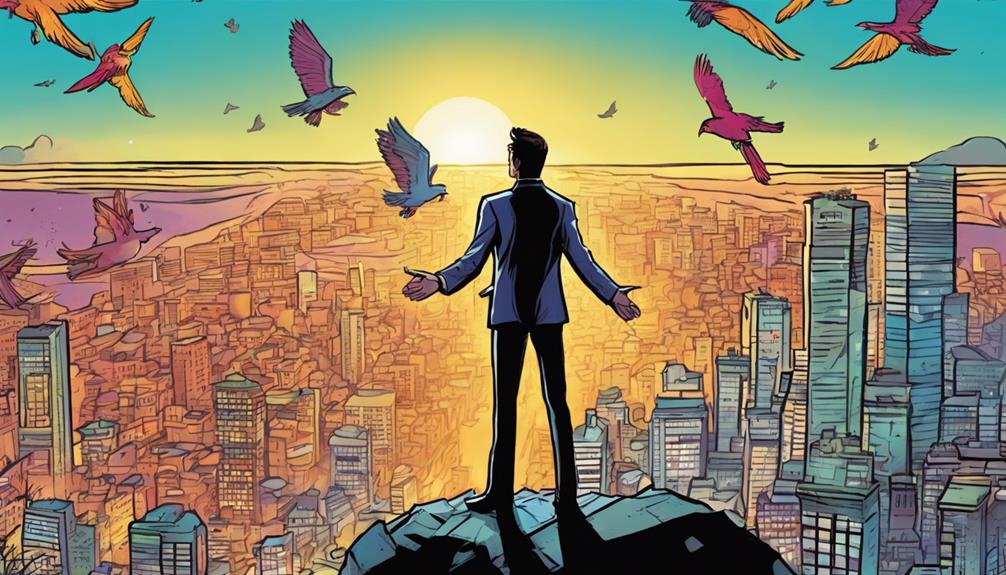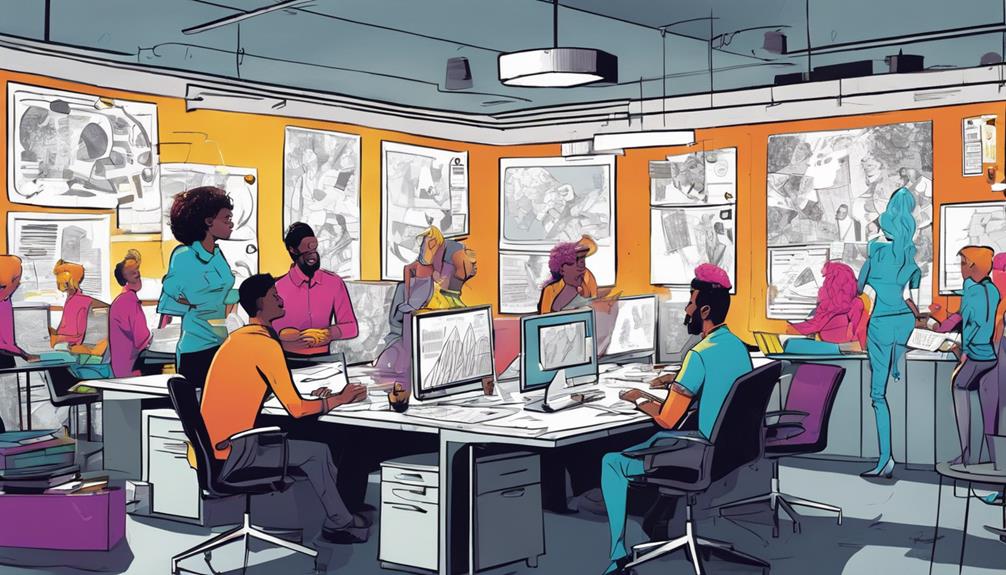Ray Kroc didn't just build McDonald's; he transformed the fast-food industry forever. With clever marketing, he targeted kids and created characters like Ronald McDonald to foster loyalty. His franchise model revolutionized business, allowing rapid growth while ensuring local consistency. However, this success came with health risks linked to fast food and environmental challenges. Kroc's legacy is a blend of innovation and criticism, influencing both consumer culture and modern entrepreneurship. If you explore further, you'll uncover the deeper implications of Kroc's strategies on today's fast-food landscape and how they shape our choices. Kroc’s impact extends beyond the fast-food industry. His influence can be seen in the way businesses operate and how they cater to consumer demand. It’s fascinating to trace the evolution of his strategies and compare them to the life journey of top chef champion, highlighting the changing preferences and attitudes towards food. Understanding Kroc’s legacy is essential in navigating the complexities of the modern food industry and making informed decisions about what we eat. The impact of Ray Kroc’s influence is evident in the way fast-food companies adapt to consumer demands and navigate challenges. In today’s world, where healthy eating and environmental sustainability are at the forefront of discussions, Kroc’s legacy continues to shape the fast-food landscape. His strategies and their implications on consumer choices are even more crucial as we navigate an ever-changing food industry. It’s interesting to compare Kroc’s approach to the evolving attitudes towards food, as highlighted in the kardashian’s harvard talk, and see how his legacy continues to impact the way we think about and consume fast food. Understanding and analyzing Kroc’s impact is essential for businesses and consumers alike as we strive to make informed decisions about the food we eat.
Key Takeaways
- Ray Kroc revolutionized the fast food industry through innovative franchising, enabling rapid expansion and consistent customer experiences across locations.
- His marketing strategies targeted children, fostering brand loyalty and emotional connections through characters like Ronald McDonald.
- Kroc's approach contributed to the rise of diet-related health issues, highlighting the need for awareness around fast food consumption.
- McDonald's environmental impact under Kroc's leadership sparked a growing demand for sustainable practices and ethical sourcing in the food industry.
Ray Kroc's Marketing Tactics
Ray Kroc's marketing tactics revolutionized the fast food industry by targeting children, setting the stage for lifelong brand loyalty. By creating an enchanting character like Ronald McDonald, Kroc made fast food appealing to families.
You'd see him at schools, birthday parties, and community events, embedding the brand into children's lives. Kroc poured significant resources into marketing aimed at kids, knowing their influence over parents' choices. This strategy not only boosted sales but also fostered an emotional connection with the brand.
However, this focus on children has drawn criticism, especially as diet-related diseases rise. As a community member or health professional, you might find yourself advocating for healthier marketing practices, questioning the ethics of such targeted advertising.
The Franchise Revolution
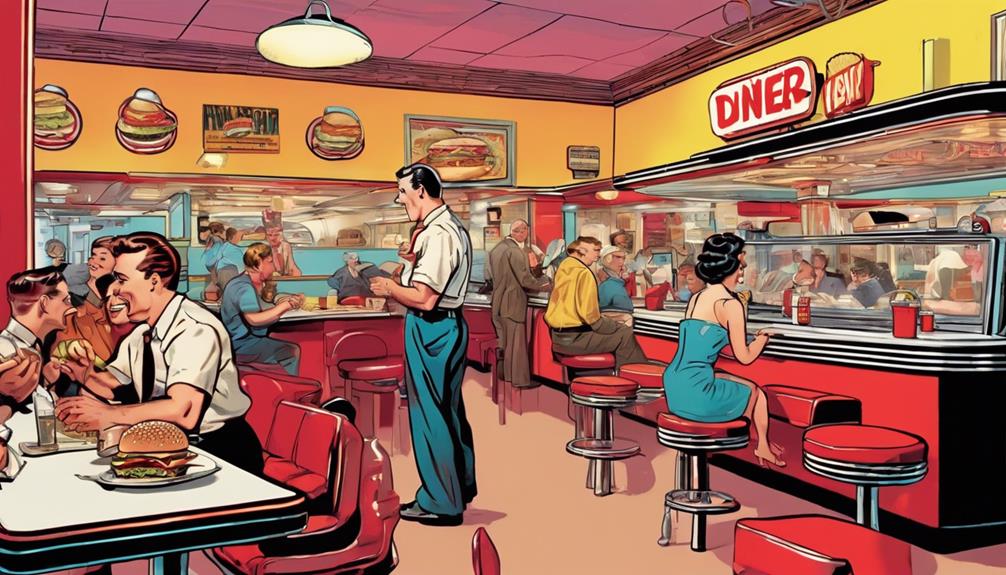
The franchise revolution, driven by Kroc's innovative model, transformed the fast food landscape and reshaped how businesses operate globally.
You can see how Kroc's approach allowed quick scalability, enabling McDonald's to expand rapidly while minimizing financial risk.
By using local franchisees, Kroc guaranteed a consistent customer experience across locations, which became a hallmark of the brand.
This structure also shifted operational responsibilities, empowering franchise owners to run their businesses while adhering to McDonald's strict guidelines.
As a result, you witness a proliferation of franchises across various sectors, influencing modern business practices.
Today, entrepreneurs look to Kroc's model for inspiration, understanding that effective franchising can lead to significant growth and brand loyalty in competitive markets.
Health Implications of Fast Food

Fast food consumption has been linked to a rise in diet-related diseases, making it crucial to understand its health implications. When you indulge in these quick meals, you mightn't realize the impact on your body.
Consider these consequences:
- Increased Obesity: Regularly eating fast food can lead to weight gain, as high-calorie options often lack essential nutrients.
- Heart Disease: The high levels of saturated fats and sodium can elevate your risk of heart-related issues.
- Type 2 Diabetes: Consistent fast food intake can disrupt insulin sensitivity, increasing your likelihood of developing diabetes.
Environmental Impact and Sustainability
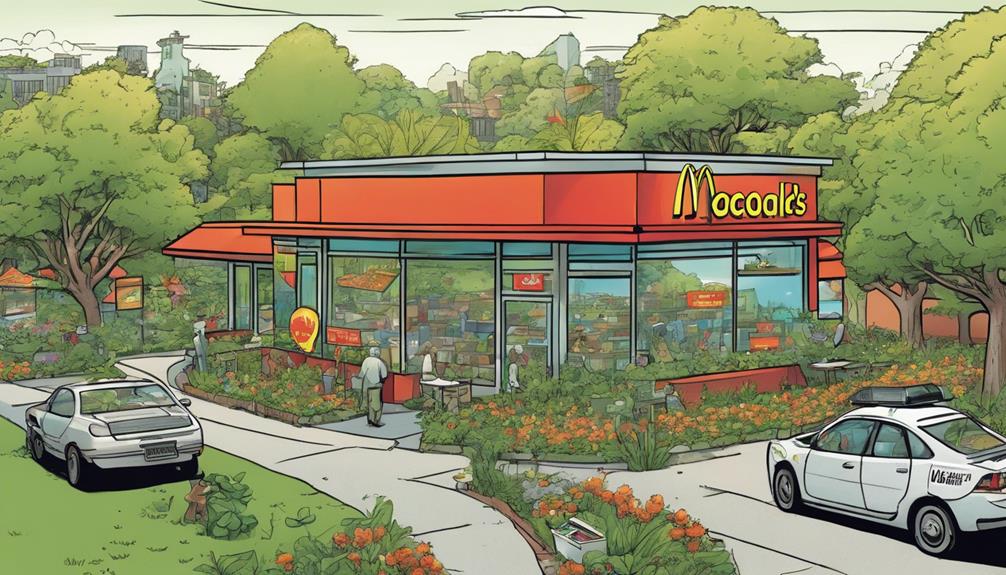
McDonald's operations have considerably contributed to environmental challenges, raising concerns about sustainability in the food industry.
You might notice the impact of their massive supply chain, which often relies on monoculture farming and chemical pesticides. This approach diminishes biodiversity and strains local ecosystems.
As a consumer, you also play a role in the demand for ethical practices; many are now seeking out sustainable food options.
McDonald's has started to respond by pledging to source sustainable ingredients and reduce waste. However, the effectiveness of these initiatives often comes into question.
It's crucial to stay informed about the environmental implications of your choices, pushing for greater accountability and sustainable practices in the fast-food sector. Your voice can influence change in this industry.
Cultural Reflections in Media
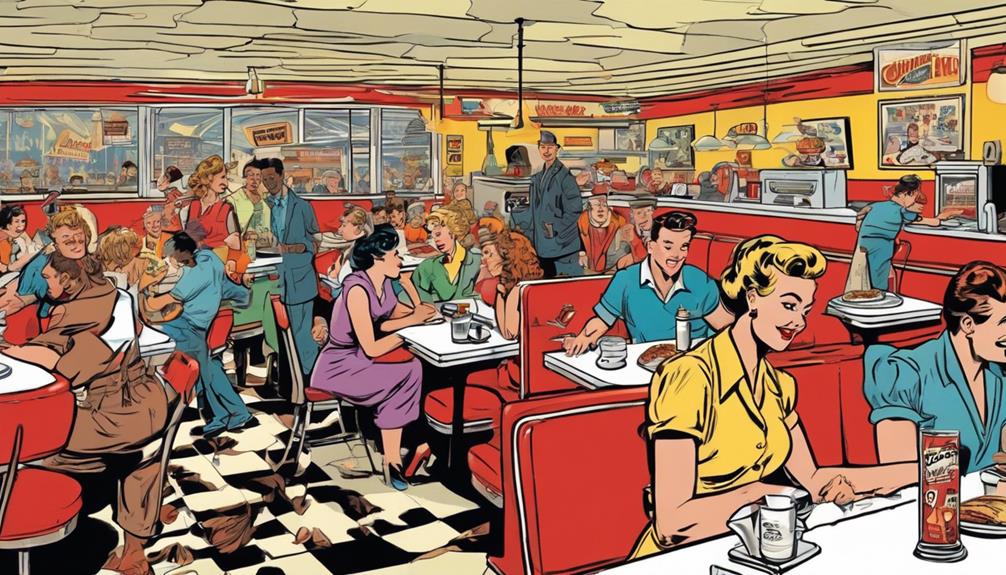
Cultural reflections in media often reveal how fast food giants like McDonald's shape societal norms and values, influencing everything from lifestyle choices to perceptions of success. You can see this impact in various ways:
- Iconic Imagery: Golden arches dominate urban landscapes, symbolizing convenience and modernity.
- Character Influence: Figures like Ronald McDonald become role models for children, embedding fast food in their world.
- Consumer Mindset: Advertisements promote a fast-paced lifestyle, suggesting that happiness comes from quick meals.
These portrayals reinforce the idea that fast food is synonymous with progress and achievement, shaping how you and society at large view food, health, and well-being.
The media's role in normalizing this narrative is undeniable, creating a lasting influence on culture.
Business Lessons From Kroc
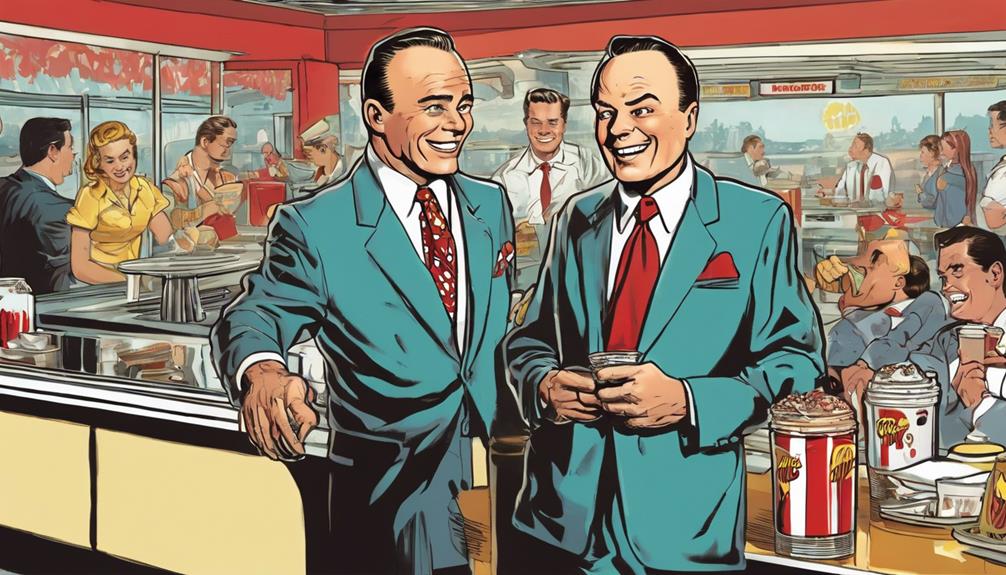
Ray Kroc's approach to business offers valuable lessons on adaptability, resilience, and the importance of a strong franchise model in achieving widespread success.
You can learn from his ability to pivot in response to market demands, ensuring your business remains relevant. Kroc emphasized the necessity of building a solid franchise network, allowing for rapid expansion while maintaining consistency across locations.
His relentless pursuit of quality and operational efficiency reminds you that attention to detail can greatly impact customer satisfaction.
Additionally, Kroc's understanding of the power of marketing shows you that connecting with your audience is essential.
Future Trends in Fast Food
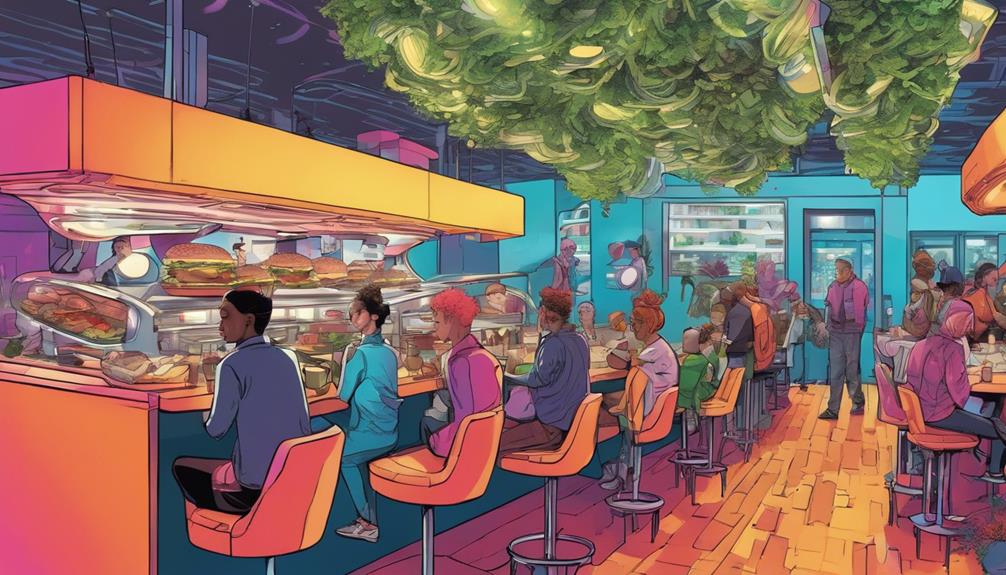
As consumer preferences evolve, the fast food industry is shifting towards healthier options and sustainable practices to meet growing demands for transparency and ethical sourcing.
You'll notice several trends emerging that redefine dining experiences:
- Plant-Based Menus: Fast food chains are introducing more plant-based meals, catering to the rising vegetarian and vegan populations.
- Local Sourcing: There's a push for sourcing ingredients locally, which not only supports community farmers but also reduces carbon footprints.
- Tech Integration: Expect to see enhanced tech in ordering, like AI-driven kiosks and mobile apps, streamlining your experience and personalizing menu suggestions.
These trends guarantee that the fast food industry remains relevant while aligning with your values for health and sustainability.
Conclusion
In exploring Ray Kroc's legacy, you can't ignore the staggering statistic that over 69 million people eat at McDonald's every day. This reveals just how deeply his marketing tactics and franchise model have shaped global eating habits. Kroc’s relentless focus on consistency, efficiency, and branding turned McDonald’s into a cultural phenomenon, influencing not just food but also the business landscape worldwide. His model has inspired countless industries, much like how *David Blitzer’s sports empire* has carved out a dominant presence across various sports franchises. Both figures demonstrate how visionary leadership can revolutionize an industry and create an enduring legacy.
While Kroc revolutionized fast food, his methods also raise significant questions about health and sustainability.
As you look to the future, it's clear that Kroc's impact will continue to influence not just what we eat, but how we think about food.
